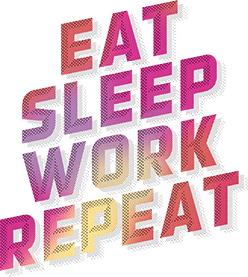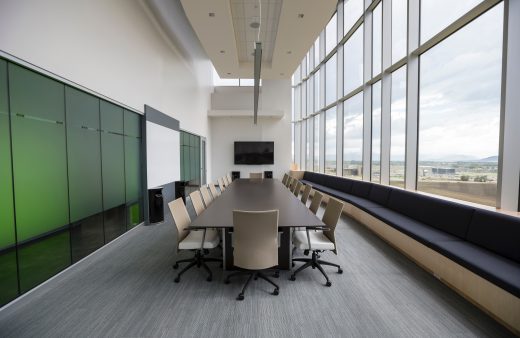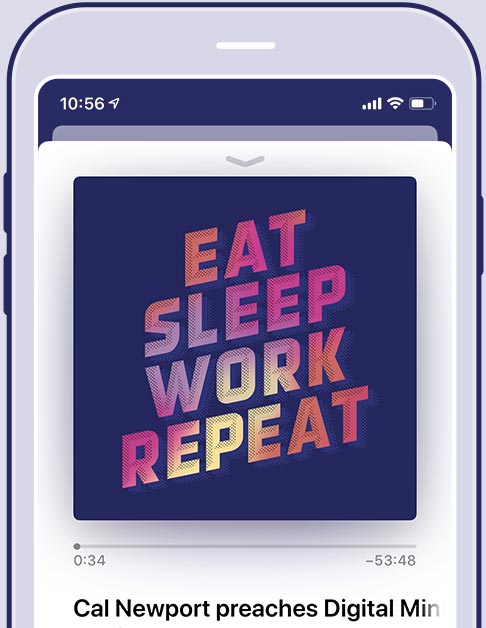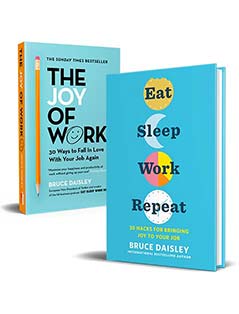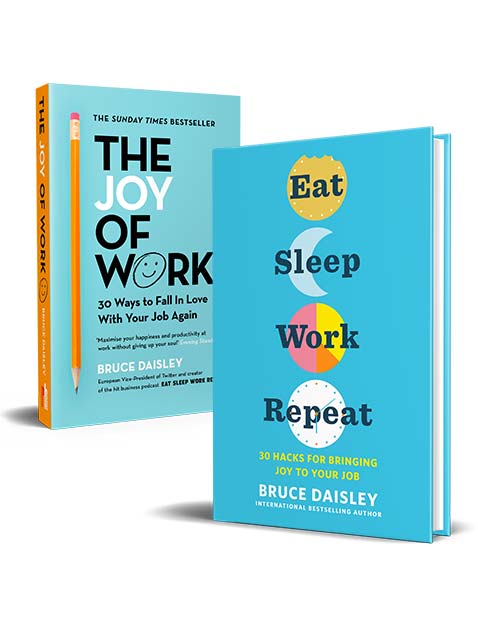Work culture… follow the data
Understanding how our workplaces function is one of the invisible components of workplace culture. A powerpoint presentation from the boss might lay out the strategy but Team A is half the office away from Team B then it could have a significant impact on their ability to socialise together. That was the finding of Humanyze – a people analytics business spawned by work at MIT.
Ben Waber is the founder and CEO of Humanyze, a firm that spun pioneering work from MIT into the world’s leading people analytics business. Their technology can track how your office is working.
Full transcript
Our whole conversation is going to be about the whole idea of People Analytics and the ability that we can learn a lot about how people behave from just watching them with data and evidence. Do you want to talk through – before we get in – how you get this data because for example a lot of the stuff that we’re going to talk about is cohesion. Cohesion is something you observe through these Sociometric badges, right. So do you want to explain what the badges are? Let’s talk about that.
BEN WABER: Yes so broadly speaking there are two ways we collect data. One is with digital data. So email chat, meeting data and the other are with sensors. Our badges, Sociometric badges, are one way to do that. These badges – you can think of them as a next generation company ID badge. A typical ID badge has RFID in it. This is the chip used to tap into a door and that’s a sensor. And if I put little RFID chips in them they can figure out where you are. Besides being creepy that doesn’t tell you how people are interacting how they are collaborating at work. What we’ve done is add some additional sensors to those ID badges specifically: microphones, Bluetooth, infrared and accelerometers. What the microphones do is… they don’t record what you say but in real time they’re doing voice processing. How much are you talking? What’s your tone of voice. How loud are you talking? And from that we can figure out how quickly you’re speaking, are you being interrupted, are you dominating conversation? Those sort of things. Using infrared and Bluetooth and combining that with a microphone I can figure out who’s talking to who. Where people are within the offices and that enables you to figure out how are people spending their time. Are you working alone versus meeting but of course then also really look at what the network is across company. You have a very broad network to talk to many people who don’t communicate very much to each other. All you this very cohesive network where the people you talk to talk a lot to each other.
Those are very different things. And to really understand that at a deep level you need this very fine grain sensor information so that you can accurately figure out who’s actually talking.
Did you originally start as a student of Alex Pentland? You were working with Alex Pentland at MIT.
BEN WABER: That’s right he was my advisor. Originally we were using this kind of technology actually in the lab to look at things like salary negotiation and speed dating. Just from looking at the signals could you predict who’s going to win a negotiation? could you predict who’s going to go out on a date? Just based on these signals. Not what people said but HOW they said it and we could really really accurately predict for example who going to win a salary negotiation about 85 percent of the time.
What was what was given you that signal?
BEN WABER: Everyone’s interested in the salary negotiation one. What’s critical there are a couple of things. One is your dominance level like ‘Do I interrupt you?’, ‘Can I successfully interrupt you?’ That means something about my power, my social power. But even beyond that things like your speaking speed and your volume modulation are really really important. If you tend to speak a little bit more quickly. If I tend to have more variance in how I talk so I don’t just speak with a monotone tone of voice same volume but you have more emphasis those sort of things that indicates you’re going to win or do better in that negotiation.
And these are very fine grain things. These are things that actually humans aren’t very good at coding. Even when in the past you’d have some poor grad student have to listen second by second through one of these audio clips or watch a video and write down what’s happening. This is the way to do that automatically. Using sensors. Then we had a professor from the business school at MIT came over to us. We’d worked with a bunch of people in the business school on this research but he said you know you’ve been using this in the lab, I bet that would be really interesting in a workplace. What if you measure these sort of things with people working for a month at a time. And that sounded really interesting you we’d never done that before. No one had ever done anything like that before. This professor was also collecting email data and surveys every day, we added on these badges though. We didn’t know what we were doing at first. We collected four gigabytes of data per person per day.
Huge amounts of data. But what should you look at? First we said well listen we’re just going to look at who talks to who. It’s really simple. There is decades of research on that as being important using surveys. Let’s see if we can at least replicate that. What we were be able to show was that just looking at those metrics we were able to predict performance about six times better than all the other metrics put together. And it was huge. Doing very simple things. Over time at MIT we were adding more and more features, were getting into more and more detail, we were showing more and more companies that we can do the same sort of thing. And that’s really the the science base that we built up over the five six years at MIT.
OK I want to look at a couple of things. And you give some examples here. What I love is that while most of us probably tell ourselves our jobs are not like call centres. Actually call centres can be really instructive. They are high pressure environments, our jobs are becoming high pressure environments and some of the patterns of behaviour that we can see in call centres I think are very instructive about what’s happening to our jobs and work. Through your badges you were able to learn something heretical to the idea of call centres. Call centres were like these efficiency engines, they were as close to 19th century inventions of factories as was possible to put service workers through. Sending them on breaks separately, right? So let’s go into specifically what you learned about stress in call centres and breaks in call centres.
BEN WABER: What you spoke about is a really important point because actually before we started of looking at data from call centres I’d assumed what was going to be most predictive of performance was how employees talk on the phone to customers. If you speak a certain way you can do calls quickly, you’re more productive. And it should be noted that it is really easy to measure individual performance in call centres. It’s how quickly they complete calls. There’s a few other ways but that’s a very simple metric that makes sense. Again we go in and we collect who talks to who, how do people talk to each other, all these things over a long period of time, many many people. What we saw with that by far the highest performing employees were people with these very cohesive networks. People talk a lot to each other. Now here’s the thing, I can explain that because it’s a very stressful job if you’re in a call centre you’re getting yelled at all day about stuff that’s not your fault. That’s your job. Previously again – as you mentioned – you have breaks at a separate periods of time from your coworkers. Which means, imagine if you have a tough call with a customer. You can’t complain about that to anybody for eight hours at least. And by then I just want to go home. Of course imagine now that I have a break at the same time as my coworker, I can complain about that. That seems reasonable. That could be good.
Beyond that you can say well listen if I’m in a very tight knit group, a very cohesive group. First of all if I complain to one person, everybody else knows they can all support me. But then even if I think about it from a performance perspective well imagine I learned how to solve a particular problem if I tell one of my friends, all my friends know and will share that information. I will tell them because even though I’m competing with them in terms of performance metrics for promotions things like that. I know that they will eventually share back to me. If they don’t cut them out of the group. Now these are all things that can theoretically explain but call centres have been optimised not around that but around individual efficiency. If you’re not on the phone you’re wasting time, talking to a coworker is wasting time. Then when we collected this hard data and we were able to show with it really the opposite was true. What that enabled the bank to do was to test this new break structure. For half of the teams they gave them breaks at the same time. Really simple doesn’t actually cost them anything but they would not have done that. They would have never done that without this data. I mean even you had frontline employees in the call centre saying ‘we should do something like this’ but they would never do it because it had been optimised and proven with the data they had that the current way of doing things was optimised. Now they have new data they’re willing to test it. You go back and you see what happened. Well the groups got about 18 percent more cohesive – what you’d would expect because now I have a break at the same time as everyone on my team I’ll talk to him. Stress went down by about 19 percent which again you would expect because you can you can vent all these things. We measured that both through surveys but also changes to tone of voice – the way people speak is significantly predictive of stress. What was amazing though is beyond the employees their performance went up by 23 percent. They completely calls 23 percent more quickly. Importantly the groups that didn’t change anything, they had no change in any of these metrics. What’s really amazing about that is if you go into a company you say we’re going to improve performance by over 20 percent. The reaction is to say we need to change how we work. But these results show that if you can find the social levers that people are responsive to and you can act on them in the right way you’re going to get really big results.
And what I saw I think it was elsewhere in work. This cohesiveness is built not meetings, we don’t build cohesiveness in meetings, we don’t build this cohesiveness actually sitting around our desks chatting do we, we build it in these pressure release, stress relief environments.
BEN WABER: That’s right 80 percent of the interaction actually in these call centres, that was the cohesive interaction are happening when people’s lunch breaks overlap by about 15 minutes. Again these are informal structures that tend to create those kind of interactions. Now that does all depends on how you structure those times. If I wanted to create more diverse interactions with people in many different groups you could also do that. I could shift where people sit and you sit next to people in other groups. I could make it so that the people who have a break at the same time in the same break area are from different groups, you can do these things right. But it’s all about how you structure. Depending on what makes a particular group or organisation effective or what matches their strategy then that’s how you’re going to want to plan these things. But you’re right that you certainly do get some interaction sitting at your desk and in a call centre they don’t get any interaction by their desk because they’re on the phone at the desk.
In other so other environments the interaction at desks might be a bit more helpful.
BEN WABER: Yeah I would say in other environments there is a very significant impact of desk location. And that will structure what your network looks like. Again if I sit in a little pod with three other people I’m going to talk to them a lot that’s going to happen. Again if I always sit next to one other person and I’m not really near other people that obviously that’s not going enable me to naturally have a very cohesive network.
And so you end up with a situation where I think you describe it. Aside from those coordinated breaks in modern office environments the things that determine greater cohesiveness are where you place the water cooler, where you place the coffee machine, the length of the lunch tables. Those things that we’d probably ignore or delegate the placing of those things.
BEN WABER: That’s right. The location of the coffee machine has about as much impact on who talks to who as the org chart.
You think about how much time we spend agonising over the org chart. As we should, it’s very important. But in a similar way we should probably spend a lot more time thinking about where the coffee machine is. If you put it for example within one group area that group will be more internally focused they will have a very cohesive network. On the other hand if I put it between two groups they will talk a lot more to each other. If I want that, that’s something I should do. On top of that even things like the size lunch tables as you mentioned. In one company you saw that by far the most productive people they were eating lunch with 11 other people and sometimes it was 10, or nine other people. But it’s never more than that. By far the least productive people they were always eating lunch in groups of three other people. Sometimes it was two. Very rarely it was one that was never more that. We wanted to figure out why was this happening. We go to the cafeteria and we saw what was happening. By one set of doors all the tables had 12 seats. The other set the doors all the tables had four seats. Really simple. Again who’s thinking about how big the lunch tables was. No one cares. How important could it be. But it had double digit impact on performance. Right.
So the bigger table was a higher performance?
BEN WABER: And so what would happen is, you wouldn’t go to lunch with 11 other people. You would sit down at the table. Other people would sit next to you and you’d start talking to them. And later in the week you were significantly more likely to speak with someone if you had lunch with them. Again not shocking. But as you can imagine if you ate at these bigger tables, these were software developers so your code depends on the code of people in other divisions. You’re much more likely to know them if you sat at these bigger tables. It had that kind of impact. Again it’s not to say that for every organisation big lunch tables is better, it’s what are the behaviours you want to elicit. Things like lunch tables, desks size, coffee machine location they all have a very significant impact on that. And if you’re not consciously thinking about those choices if you’re picking something just because it looks pretty or because it’s easier or cheaper you are probably making a very big mistake.
So let’s go on and look at the issue of remote working.
BEN WABER: Importantly when you work from home it doesn’t just affect you. It affects everybody you work with and the data we have (which again is the largest dataset on workplace in the world). You dramatically reduce the performance of people you work with by being at home. And it’s not to say that you can’t communicate with the people you work with. We just don’t naturally and you can force yourself to do it but it takes a lot of work. I travel a lot for work. I’m here in London today. I still call every one of my direct reports even though I’m here. That takes effort though this isn’t on the calendar. This is something that I will do. Many years on doing this, it takes work it takes discipline to do that. The vast majority of people, you’re not going to do that. You work at home. I might send you an email, maybe. Otherwise I’m going to work on some document. I will get my individual work done. The thing is important is that over the course of a year on average if you max out the amount of focus time, focused work you. About 40 percent of your time is going to be spent on focused work. An order of magnitude you’re not going to spend much more than that you can spend less than that depending on your role. That’s the max. What does that mean. Well it means that on average if you worked two days a week from home that would mean that when you go into the office you should be doing zero focused work, zero. Only interacting with other people. That’s impractical.
And the reason why is because our interactions as much as they might seem unproductive actually correlate to high output and higher productivity.
BEN WABER: Correct. The whole point is we like to think of individual performance as this number of – you know – reports I write or emails I answer. That’s productive. But talking with my coworker at the coffee machine, that’s not productive. It’s always the exact opposite in a sense. Of course at the end of the day some work needs to get done. You need some of that. But the thing is if you make 20 people you work with 10 percent more effective that should be your job. I don’t care if you’re interacting by the coffee machine the whole day. I don’t need you to do any individual work. That have been really hard to measure in the past. And now we can measure that. The thing is that it’s again not to see that focus work is never important. It is sometimes important but that the stuff we do is really really complex today. The whole reason we’re in organisations is because together we can do something we couldn’t do by ourselves. To do that effectively you need to coordinate. Co-ordinating effectively means you don’t have to redo work. You get that done faster. What’s interesting is if I rely for example on formal specifications I could do 80 percent of my time as focused work but because I don’t understand the edge cases of what you’re working on then you’re going to have mismatches and you will have problems that you’ll have to rework and you’ll still be doing more focused work but you will be doing way more of it than you would if you spend more time collaborating and getting on the same page. And so what this means is that at a high level again if you work from home one day a week it’s probably that there’s actually a lot of data on that. That’s fine. Doesn’t really have a significant negative impact on anybody. You get beyond that. There is an impact that starts to happen not just on you. It’s not about we output. It’s about how can we help everybody we work with be better. And I think that that is really a mindset that we have to think more about. Right. And if we just don’t feel like commuting in today right. Or I’m a little bit tired. It’s a selfish choice. And again sometimes being selfish is OK. But if you consistently choose yourself over other people you are first fool hurting your long term career prospects but you’re also hurting everybody you work with.
And this is specifically rooted in the data you’ve seen.
BEN WABER: Correct.
So none of this your opinion.
BEN WABER: This is important. First of all there is a lot of research on this but now this is a point where we have so much data on this that I can quantitatively show you these things.
So you specifically gave the example that Marissa Mayer when she took over at Yahoo she reached for what a lot of leaders do when they’re new, they reach for control. She summoned everyone who was a homeworker. And she summoned them. What you brilliantly articulated, you counter posed between that which was opinion (and it was actually rooted in what she’d seen at another company) and you looked at it from a data perspective. You talked about the gap between software developers.
BEN WABER: Yes.
You want to explain what the data says on that then.
BEN WABER: Yeah a lot of people think of software developers as solitary people who sit in the corner drinking Mountain Dew and no one talks to them. Again I’ a former programmer, I like Mountain Dew, it’s a stereotype for a reason. But the thing is your code depends on the code of thousands of other people. If you don’t communicate with them, that’s where the bugs pop up. Literally decades of research on this. If my code depends on your code and we don’t communicate, it takes us 32 percent longer to complete that code. That’s huge.
Pure and simple a third longer.
BEN WABER: That’s right, it’s really straightforward. Again multiple studies have replicated this over not just programming, big engineering projects, people doing aircraft engines, complex construction projects same thing.
So actually for for this purpose you said coders and developers using Slack and things like is actually a really good thing because they can they can talk in real time.
BEN WABER: So again what I will say is that we’ve measured usage of things like Slack and other chat tools or team collaboration tools. They don’t appear to change the equation right. If I know you, I communicate with you, if I don’t know you, I pretty much don’t communicate with you. And ‘know you’ I have to have met you face to face. And there’s also a lot of good work on that. But if we meet face to face first we look more like a face to face team than if we never meet face to face.
You’ve almost got this stack ranking face to face teams are the best…
BEN WABER: For most things. And again it is for most things. So again if I’m trying to roll out something in India I need people there. If I’ve got sales people on the ground that need to meet with customers. Of course they should be outside the office but for collaboration intensive tasks the technologies that we use today are not conducive to supporting the kinds of collaboration we need to be really successful all the time. Sometimes, one day a week, couple of times a week we can. OK. That’s something that is doable and we can do it. But you get beyond that and it’s hard to break down very rapidly. And that again what we’ve shown from you over years worth of data is that again if you work remotely you communicate, even if I just say you only need to communicate once with people you have a dependency with in software development, we communicate about 8 or 9 percent fewer times than if you’re co-located. Than you back that out again for a company like Yahoo that would have been worth well over $150 million a year. Even beyond that if I look at the quality of those interactions, again not even looking at face to face communications lost. People who work remotely communicate on average 7.8 times about these dependencies. People who are co-located digitally communicate on average closer to 38 times about these dependencies. And so if you look at that impact that’s probably much beyond that $150m impact. It’s something that again I bump into you in the hallway, I’m like oh I forgot to get back to you about those things.
It’s those kind of serendipitous interactions that build trust and all these other things. That’s what remote collaboration technologies are just not good at yet. Someday we will probably be good at that but we’re not there yet.
Right so Marissa Mayor had she wanted to pursue that then she should have gone down the data route rather than ‘here’s what we did at Google.
BEN WABER: What I’d always argue is say this is something we’ve seen in general if you have a hypothesis that your company is different that’s totally fine but you need to measure it. Otherwise in any case you should measure it because could you make a mistake and obviously I’m partially biased on that but at the same time maybe your company is an outlier or because of whatever your culture or strategy you have different things that make you effective and that’s fine. When you’re making these really large decisions the decision that frankly decide the future of your company. If you’re doing that because ‘well at this other company where I worked’ or ‘I read this article about this other company and they did this and they were successful’ if you’re arguing that’s how you should do things that’s crazy. We don’t do that with any other part of business. You don’t say I saw this cool ad on TV lets spend 2 or 3 million dollars doing the same sort of ad because I liked that ad. You don’t say well I am going to structure my supply chain this way because that’s cool. They say well actually use data to make and tests to make those decisions. With the people side of business. We have to manage in the same way and just admit we don’t really know what the right answer is.
We have hypotheses and that’s good, let’s see what works and then let’s iterate on that and let’s learn from that. We have to learn that for our own companies and taking into account what other people have done. But really making sure that we’re figuring out what makes us successful rather than what some expert says makes us successful.
The final thing that I wanted to talk about before we talk about Humanyze was creativity. I think we’ve got this notion that’s passed down to us through like the legends that we’ve grown up whether it’s Leonardo, whether it’s Picasso. That these great creative people spend their time in solitude. And actually all your evidence and the just looking into what you found here, and we heard something similar from Sandy Pentland when he talked about social physics, creative teams are more vocal and more energised.
BEN WABER: That’s right. It is interesting that in the West where we have these myths of… Leonardp Da Vinci where he just sat in a cabin all day and invented stuff. And that’s not even accurate.
Oh so it was probably a collaboration that other people collaborated on an accident that he happened during the Renaissance. He was collaborating with artists with scientists, with people from many different disciplines in many different cities. He wasn’t sitting by himself. We see the same sort of things in organisations where we think ‘I’ll get this really creative person and I can lock them in a broom closet for a year they’re going to do great stuff’. And that’s garbage that’s just not accurate. There’s great work done by some of my colleagues, Win Burlison out of Arizona State who were trying to measure creative teams. And again with creativity it’s not a hard measure of creativity but using subjective measures, he said ‘Well here are different teams that are various degrees of creative from very creative to less creative, in many different organisations’. And he said well what do these very creative teams seem to do differently and he goes in there and actually measures quantitatively how they interact with each other, how do they spend their time? Because you could argue well maybe people do spend all the time by themselves but what you see is something very different. Now to be fair everybody isn’t talking to each other all the time. You don’t have this group that’s extremely cohesive because then I know what you’re doing all the time, you get groupthink. You’re not getting getting new ideas.
Instead what you get are these groups who go out and they do talk to a lot of people from many different parts of the organisation or outside the organisation then they do come back together and they share those things and then they come up with new ideas. But it’s that sort of pattern. So it’s almost as Sandy mentions its the exploration pattern of bees – where what you have is different bees in a hive who go and try random places looking for flowers. Then when one finds flowers they come back and they share that, and literally by how vigorously they dance indicate how many flowers there are and then they pick the best flowers to go and then everyone goes there. And it’s the same sort of thing when it comes to people where when you have a team that’s trying to build some new product going out and trying to get exposed to random things. Some of the things will have no value and some will and you can’t know that beforehand. But then by coming together and saying well ‘here’s what works’. Well here’s what we think will be a good idea. And then as a group figuring out what you should do, that tends to work really really well and there is great experimental evidence that shows the same thing. The quality of brainstorming sessions for example, if you have people first go out on their own and think of ideas but then come together to share – that is better than everyone having a single brainstorming session together. It’s better than everybody coming out with ideas just by themselves. It’s this process where you have exploration and then you combine that that’s really critical.
I mean this is just a revolution right and anyone who’s interested in culture and interested functional organisations, the fact that you’ve been able to bring this learning in the last few years. And so you’ve got a company Humanyze that is now taking what was previously work of the MIT and you’ve turned it into a company. Explain how you going about trying to bring that to companies and the way that people can access that.
BEN WABER: What we’re really trying to do is fit these really advanced people analytics technologies into tools that people can start to use today and then eventually build up more advanced capabilities. Really what we provide our modules around specific classes of people problems. Diversity inclusion, workplace planning, workload assessment, a whole bunch of things if you go to our site you can see more of them. But the idea is we can work with data that you already have or add additional data sources from ID badges or what have you to provide real collaboration intelligence on these specific people decisions, And eventually get to a place where not just we provide you intelligence that helps you gain insight into things you are doing but eventually get to a place where you can use these metrics to plan new interventions and to rapidly test how you manage the business. And that takes time. We are the technological foundation that enables companies to get to a place where they can move the people side of their business at the same speed that they move the commercial side of their business.
And certainly the way you describe it at the end of your book you talk about extrapolating these developments saying ‘so maybe we’ll end up at this’. And actually the one thing that really struck me is a lot of the things that we discover, one company discovers that people do this and then this works and yet we don’t we don’t systematise those things. We don’t harness any advantage from those things.
BEN WABER: That is the sort of thing that, as we gather more and more data about what actually our customers are doing with this technology we’re starting to share that back. Where for example one of our customers reorgs to a functional organisation they move from geographic base to functional base, how does change how people work? Now we have some data points on that. Another one of our customers moved from private offices to open plan. What does that do? And one of our customers implement a particular diversity inclusion training program. What did that do? So what we have is more and more of these data points where the company implements something and then we have the behavioural impact, how does that change how people work? What that means is that actually you start looking into early next year we’re going to be providing metrics so that you can say ‘well if you want to change this behaviour by 10 percent here are three things that companies have done that have done that’. And we’ll do more more of those things. We’re currently geared towards serving large enterprise customers and that’s what we’re going to do for the foreseeable future. Eventually we’ll be serving SMBss help do different things. There are massive opportunities to learn from those companies as well.
And then again you’ll have a future where these large companies are learning from small companies and in different countries, different regions, different industries and that rather than wait for somebody to write a case study in Harvard Business Review (which take years before someone discovers this thing). Day by day we’ll be discovering those things and people will be able to really rapidly iterate on these new ways of managing the business that we just [don’t know now. If we think about what that does. Computers are really good at uncovering these large patterns and understanding the statistical implications of those changes. People are really good at being creative and communicating complex information very quickly and conversely computers are terrible those things. The desirable future is we combine both those things. And I think that with people analytics technology in general it really creates an environment where that becomes possible.
I mean to me it’s just such a cutting edge of understanding how we can make work more productive – happier and a better place to be so I really appreciate your time.
BEN WABER: Awesome. Good stuff.
